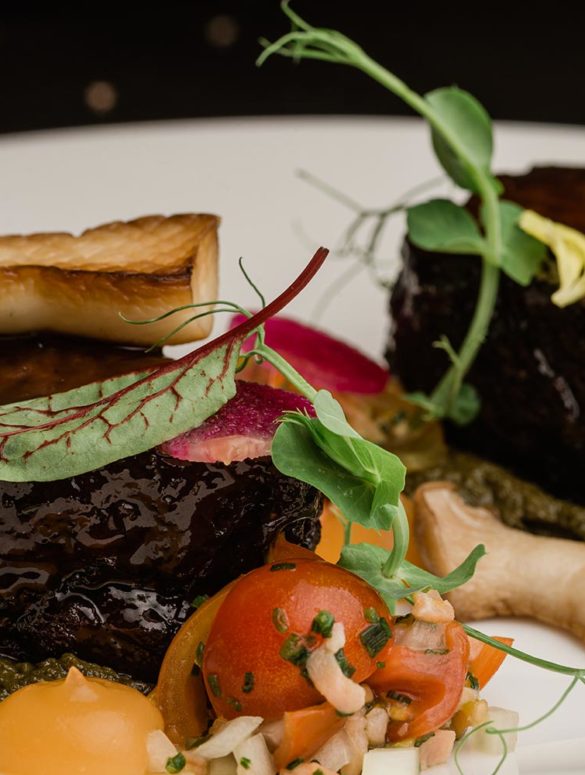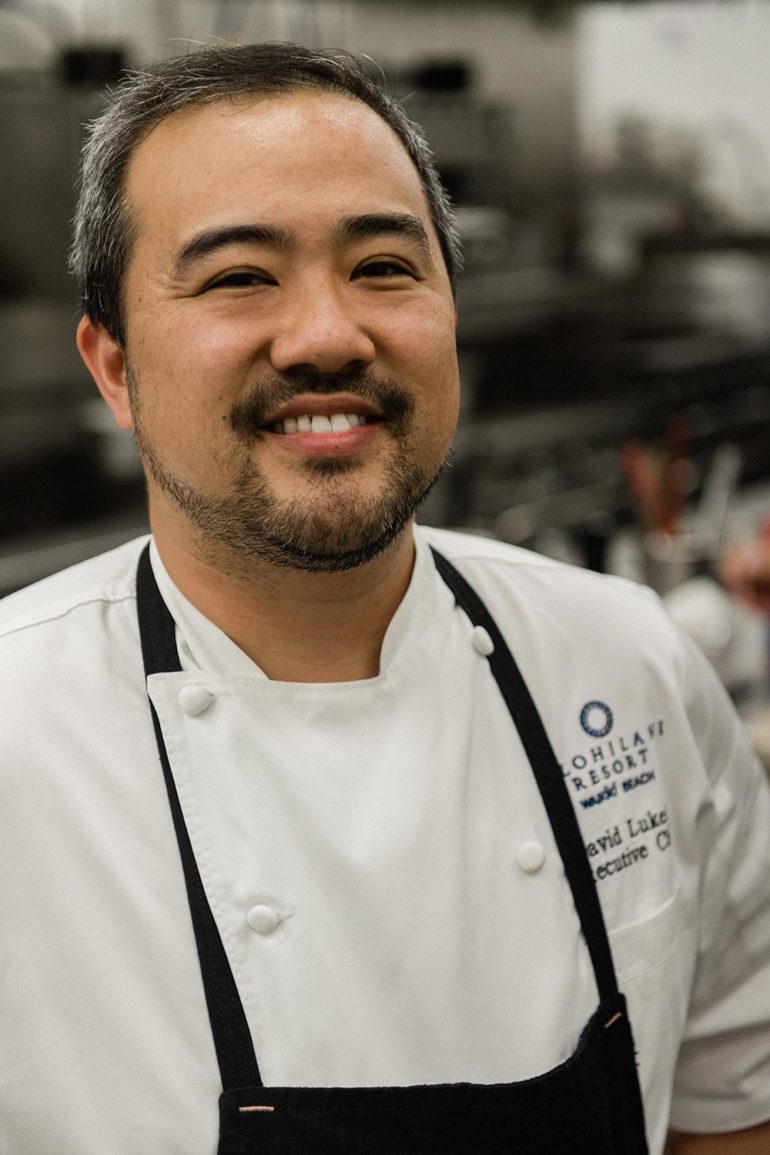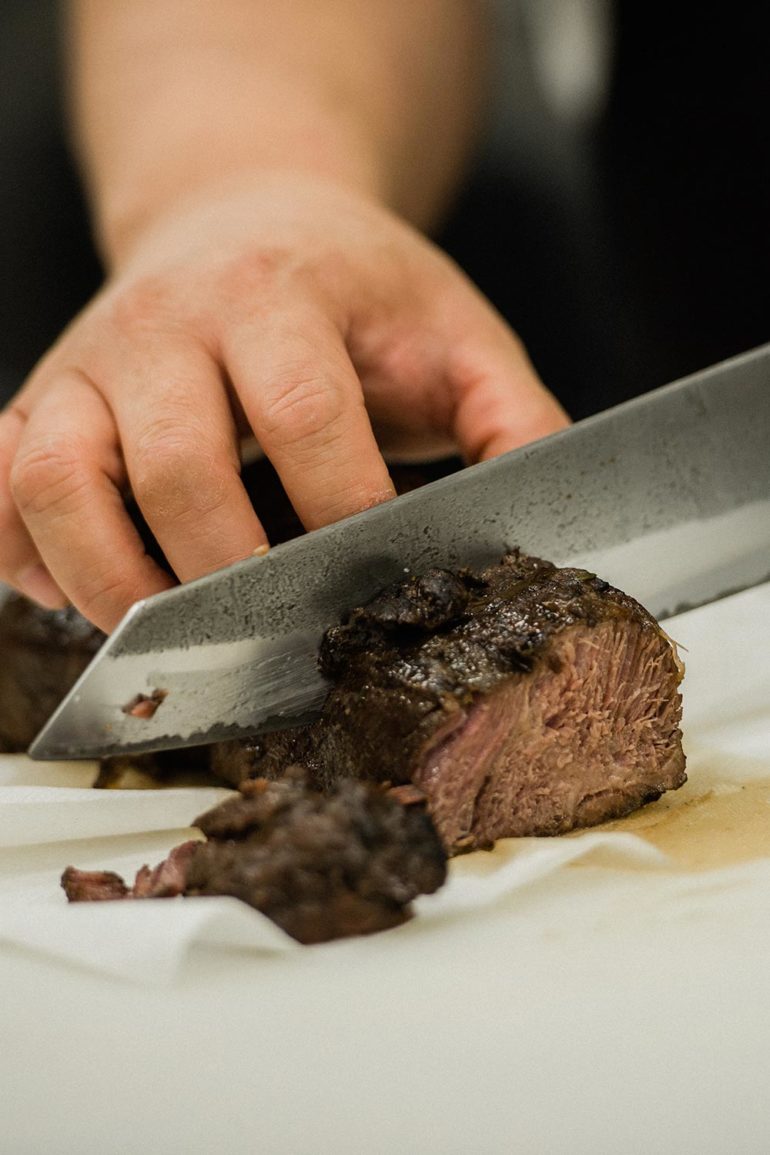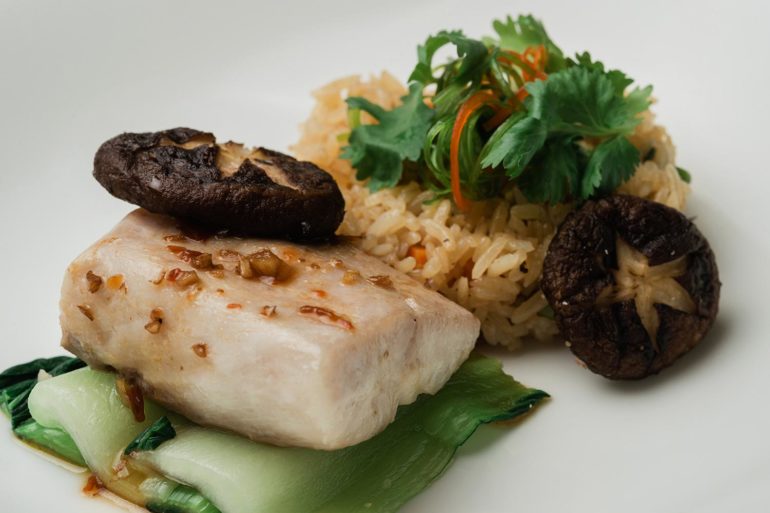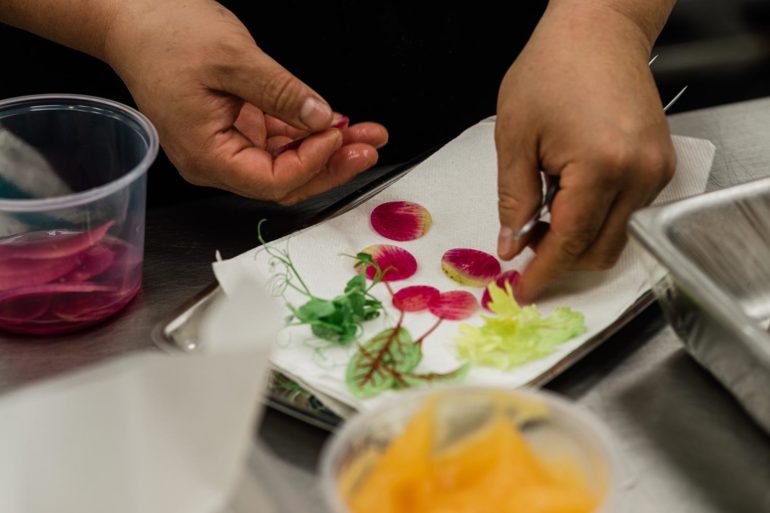Local cuisine was always a part of everyday life for chef David Lukela. Growing up in the town of Mililani on O‘ahu, he played the role of family hibachi boy and ambassador from the age of 8 years old—preparing and serving up food during parties and making sure everyone was having a good time.
But it wasn’t until after college in 2010 that Lukela’s love of cooking resurfaced and led him to cancel his plans for medical school and start culinary classes at Kapi‘olani Community College. He got his first industry job while still in school, cutting pineapple for eight hours a day at Sheraton Waikiki as a cook’s helper. Following graduation in 2012, a fortuitous connection helped Lukela get his first big break making salads as part of the pantry team at the legendary Japanese fusion restaurant Nobu Honolulu, where his affinity for kitchen life morphed into a full-blown infatuation. “It lit this fire in me for what cuisine could be, and it’s where I really developed my basics of Japanese food,” he says.
After Nobu, Lukela was hired as executive sous chef for the exclusive French-Japanese restaurant Vintage Cave under head chef Chris Kajioka. After two years of intense 16-hour days at Vintage Cave, then four years as chef de cuisine for Beachhouse at the Moana Surfrider, he joined ‘Alohilani Resort’s culinary team in July 2018. Now as executive chef leading a staff of 60 to bring inventive fare to multiple resort outlets, Lukela imbues traditional dishes with curious twists, starting with as many Hawai‘i-grown ingredients as he can get his hands on.
You have a degree in biochemistry. How does your approach combine food science and the culinary arts?
“Once food TV began to break down the mysteries of the kitchen, people became a lot smarter about cuisine. As chefs, we have to stay innovative and use as many modern techniques and ingredients as possible while still having super sound fundamentals—because if you can’t pull off the basics, like searing or braising, the newer techniques won’t make sense.”
Why do you make it a point to source locally?
“If we don’t fight to support local farmers and create a more sustainable Hawai‘i, who will? Plus we’re getting fresher, more alive ingredients.”
What are some of you favorite local farms?
“We work with Blue Ocean Marine for kampachi, Big Island abalone, Sumida Farm for watercress, Ho Farms for tomatoes, JA Farms and Hirabara Farms on Big Island for greens, Mari’s Gardens for garnishes, Hawai‘i ‘Ulu Cooperative for breadfruit, and whoever else in the moment has the best local product.”
What is the best part of being a chef?
“I love the relationships I’ve made. Since day one, the industry has been like a big family. All of life happens in the kitchen, and we get each other through the hard times outside the kitchen, too. They’re more important to me than any award I could ever get.”
Any advice for aspiring chefs?
“Aim for that pursuit of perfection every day. Learn something different, play with a different technique or ingredient. You’re never going to learn it all, but you can try.”
What is your proudest achievement?
“I’m proud of my cooks and the legacy I leave behind, and their appreciation for me.”
How about your favorite local food?
“Squid lū‘au from Helena’s Hawaiian Food—no contest!”
Signature Dishes, Deconstructed
Ahead, Lukela shares three recent creations that juxtapose innovative culinary science and traditional, local-style influences to bring together Hawai‘i’s past and present.
Beef Lū‘au
“One of my favorite things to do is flare-out Hawaiian foods with modern techniques, flavors, and ingredients. I serve an interpretation of beef lū‘au, where I take a piece of braised short rib, set it on stewed lū‘au leaves with smoked tomato jus, and top it with a gel of chili pepper water. It’s really reflective of Hawai‘i’s past and present.”
Cold-smoked Kona Kampachi
“For the Hawai‘i Food and Wine Festival, we made cold-smoked Kona kampachi (a sashimi-grade, sustainably farmed fish rich in Omega-3 oils) to elevate the fish’s natural flavor and texture. We cold smoked the kampachi, topped it with a ponzu gel, caviar, and puffed rice chips, then finished it with raw, local vegetables.”
Chinese-style Kona Kampachi
“We also do a Chinese-style Kona kampachi. As a variation on the usual method of steaming the fish and then hitting it with hot oil, I like to sous vide it instead (vacuum-seal in a pouch and heat in a water bath) to give it this really sumptuous texture.”

